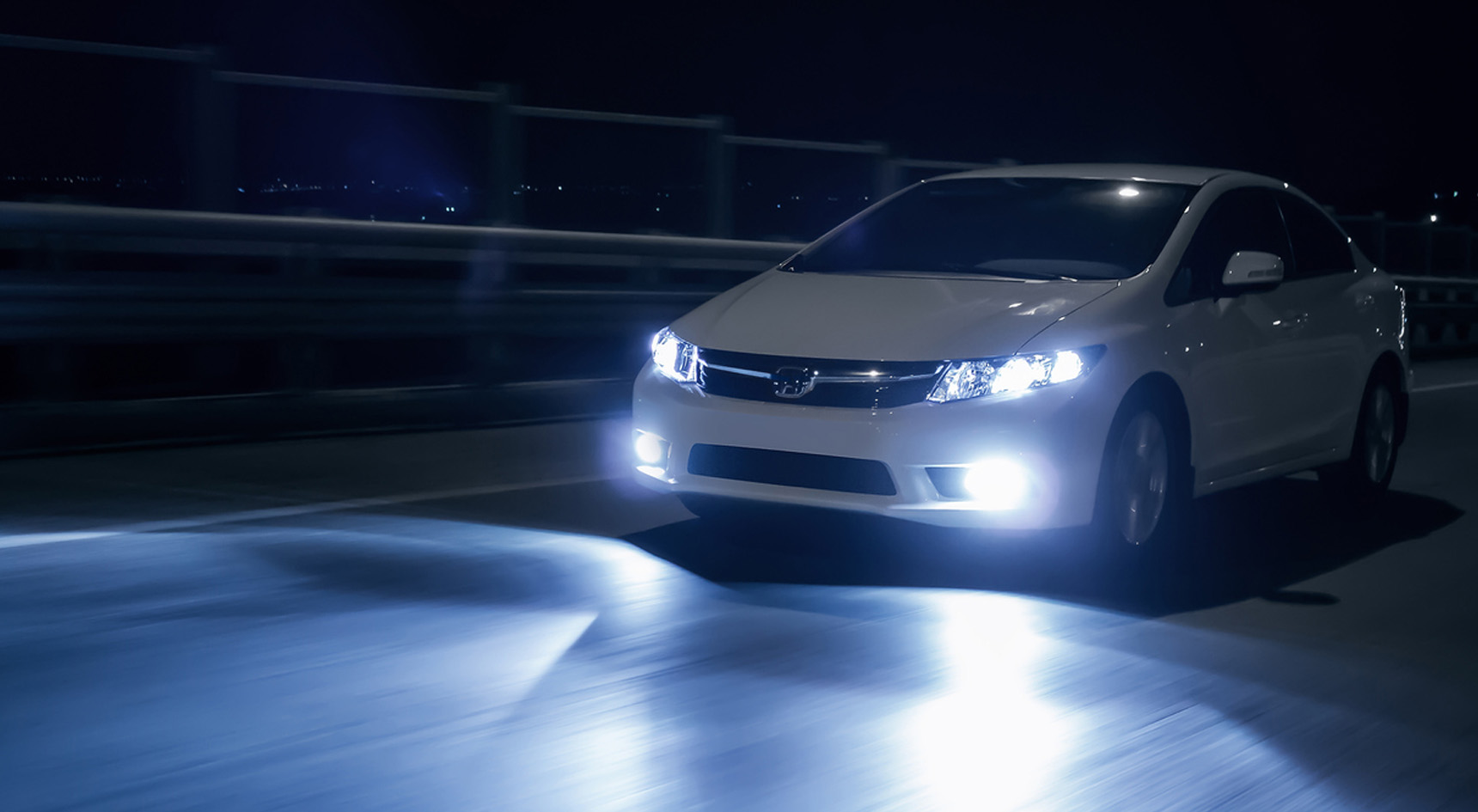The dangers of modern headlights
 Ever squinted through the glare of a vehicle’s headlights? Not only can these beams put strain on the eyes, but they’re becoming a road-safety hazard.
RAA road safety expert Charles Mountain says glare from modern headlights can cause uncomfortable situations for other road users and, in worst-case scenarios, serious crashes.
“We’ve received a few queries from RAA members about the brightness of headlights, particularly glare in rear-view mirrors,” Mr Mountain says.
“Most complaints are about SUVs and dual cab utilities, due to lights being positioned higher and, quite often, in the direct line of vision of other motorists.”
Compared to traditional halogen lights (the ones with yellow bulbs), modern headlights such as LEDs (light emitting diode lights) are designed to be brighter than they once were.
Then, there are the bluish coloured lights – the ones that’ve probably had you muttering ‘turn off your high beams’.
Known as High Intensity Discharge lights (HIDs) or xenons, these headlights are about 3 times brighter than traditional headlights and designed to give drivers a clearer view of the road.
That said, these luminescent lights can also have the opposite effect, as road users may find themselves temporarily blinded if they’re too bright.
Ever squinted through the glare of a vehicle’s headlights? Not only can these beams put strain on the eyes, but they’re becoming a road-safety hazard.
RAA road safety expert Charles Mountain says glare from modern headlights can cause uncomfortable situations for other road users and, in worst-case scenarios, serious crashes.
“We’ve received a few queries from RAA members about the brightness of headlights, particularly glare in rear-view mirrors,” Mr Mountain says.
“Most complaints are about SUVs and dual cab utilities, due to lights being positioned higher and, quite often, in the direct line of vision of other motorists.”
Compared to traditional halogen lights (the ones with yellow bulbs), modern headlights such as LEDs (light emitting diode lights) are designed to be brighter than they once were.
Then, there are the bluish coloured lights – the ones that’ve probably had you muttering ‘turn off your high beams’.
Known as High Intensity Discharge lights (HIDs) or xenons, these headlights are about 3 times brighter than traditional headlights and designed to give drivers a clearer view of the road.
That said, these luminescent lights can also have the opposite effect, as road users may find themselves temporarily blinded if they’re too bright.

How bright is too bright?
Headlights need to comply with the Australian Design Rules (ADR), which lays out the types of bulbs that must be used and how to correctly fit them. Our experts recommend to use the lights which the car manufacturer has already fitted into the vehicle, as they comply with the ADR and won’t dazzle or cause discomfort to other road users. If extra light is required, fitting dedicated driving lights or a LED light bar is the best solution, and perfectly legal. Furthermore, misusing your headlights to deliberately distract another driver could cost you a $243 fine, plus a $60 Victims of Crime Levy and 1 demerit point.How bright headlights can impact driving and eyes
The faster you’re travelling, the longer your vision will be obstructed for. At 100km/h, you’d be driving blind for 277.7m without clear vision. And according to Optometry Australia, road users are more heavily affected as they age. The not-for-profit organisation says glare generally affects older drivers more due to their ageing cornea.
In fact, drivers around the age of 40 and older often start to complain about increased sensitivity to bright lights and visual discomfort, particularly while driving at night.
And according to Optometry Australia, road users are more heavily affected as they age. The not-for-profit organisation says glare generally affects older drivers more due to their ageing cornea.
In fact, drivers around the age of 40 and older often start to complain about increased sensitivity to bright lights and visual discomfort, particularly while driving at night.
What to do when approaching vehicles with bright headlights
- Don’t look directly at the headlights of an approaching vehicle – look to the left hand side of the road and make sure you also drive as near as possible to the left.
- Slow down and, if necessary, pull over at a safe location as soon as possible and wait until your vision returns to normal.
- Keep your vehicle’s windscreen clean inside and outside, as it’ll be easier to see at night.
- If you find it harder to see at night, get your eyes checked as difficulty with driving at night or in poor weather conditions is often one of the first signs that your vision isn’t as good as it should be.
Check your lights
Headlight adjustment is free for RAA members – just book an RAA inspection.
Or call 8202 4688

